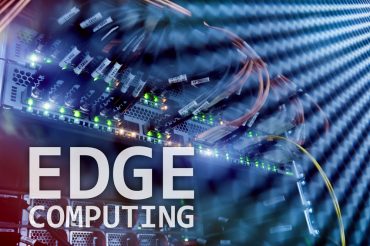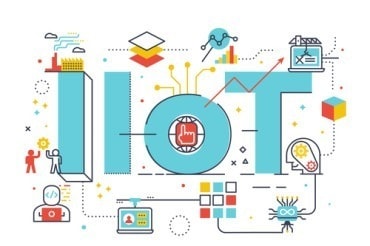
For growing real-time data analytics needs, the role of edge computing is becoming more critical to consider.
There’s a huge need out there for real-time data processing. Many businesses increasingly need to access, analyze and act on their data quickly and, with network capacity overloaded by the sheer volume of data that is now created, there is no way to send it all to the cloud for real-time processing.
But what if you could extend the computing and storage cloud offers to the edge while maintaining the cloud’s simplicity and economics? This solution is commonly referred to as edge computing and it is already gaining momentum driven by data growth and businesses’ need for rapid insights. Gartner lists edge as one of its ten strategic technology trends for 2018 and it’s clear that growing numbers of businesses want reduced latency and their data processing to be as speedy as possible.
Edge computing, which is sometimes referred to as ‘fog computing’, is rapidly becoming the complement architecture to the cloud. According to Markets Insider by 2022, the edge computing market is expected to reach USD$6.72 billion, but the question for CIOs is when to invest in edge and add to their existing data centers, public cloud, and private cloud.
Data generation is pushing network capacity to its limits across industries. Today, enterprises carry the management burden of more than 97% of the datasphere and will create 60% of all data by 2025, according to the Data Age 2025 study sponsored by Seagate.
See also: IIC releases best practices whitepaper for edge computing
Adding to a cloud world Cloud’s agility, scale and accessibility are well understood by the enterprise market. Cloud works best when data and the applications that process it can be centralized, taking advantage of the scale of the architecture. But when the volume of data that needs to be processed increases by orders of magnitude – with billions of devices that require real-time processing making up the data sources – cloud alone is not enough.
Cloud gives enterprises the opportunity to gather data in one virtual storage space that can be accessed at all times from all corners of the world. However, as organizations increasingly demand insights almost instantly it’s not going to be possible to simply rely on the existing network bandwidth, which limits processing capability when handling very large data levels.
The central cloud model will remain at the core of an enterprise’s network structure – after all, according to a 2017 McAfee report, 93% of companies currently use cloud services and cloud spending will make up 80% of IT budgets by the end of this year. But as more CIOs are having to deal with the demand for real-time data processing from the operations side of their enterprise, cloud is increasingly being paired with edge.
Extending cloud to the edge
Edge computing stores and analyzes data much closer to its source, and further away from the traditional climate-controlled centralized data center. The data processing and storage occurs in the manufacturing plant, the enterprise warehouse or the autonomous car.
With the analytics brought closer to the data source, the cloud is free to handle some of the heavier lifting, such as combining and analyzing data from multiple edge devices.
All this is reliant on intelligent data storage, curation and management at the edge – where security is built in from the beginning and not seen as a bolt-on component.
Does edge fit the business need?
For CIOs, their implementation of edge computing is going to be driven by what their particular business needs. Some might even be caught between their OT teams – who could look to edge computing spend to help them bring powerful real-time analytics to the factory floor or their supply chain technology – and the IT departments, which are more likely to adopt a cautious approach.
Essentially, though, implementation of edge computing may be driven by how many IoT-enabled devices an enterprise uses. Edge can be the enabler for businesses that want to implement truly smart logistics systems or drive efficiencies from real-time data generated by connected devices – and these are just two examples. Those applications demand instant machine intelligence and CIOs that want to make use of them cannot afford to wait for the cloud.
It typically takes 150 to 200 milliseconds for data to travel from where it’s generated to a cloud provider and back, whereas having edge servers or gateways closer to these devices could shorten that time to between two and five milliseconds. If your manufacturing business has an image-recognition system that automatically checks the quality of parts or products, for example, this reduced latency can add up to a big productivity boost.
Edge investment in the right areas can therefore allow enterprises to bring true real-time analytics into their business, boosting efficiency and – ultimately – the bottom line in the process. It acts at as an addition and extension to what cloud already offers and develops as our need for real-time intelligence increases – freeing up cloud to take on new functions and drive growth, too.







